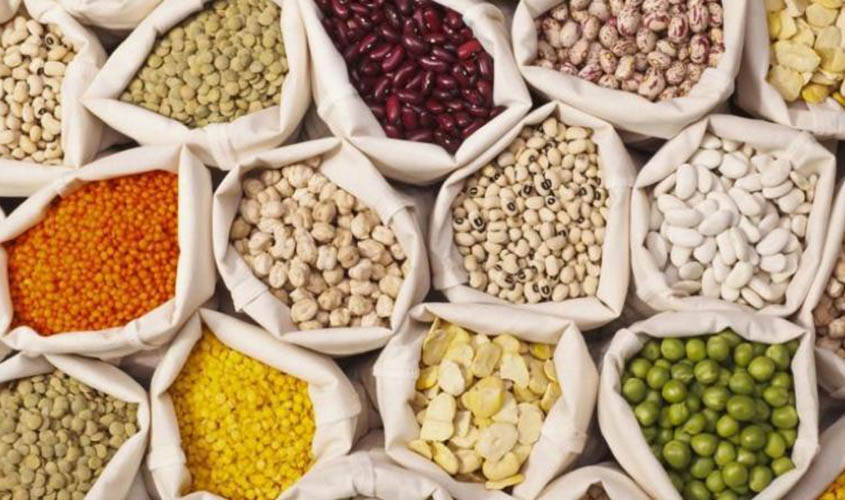The decision may provide some succour to agriculturists, but the claim that it would end farm distress is a gross exaggeration.
The Narendra Modi government is trying to sell the higher minimum support prices (MSPs) it announced recently as a measure to “end farm distress”. But, at the end of the day, the announcement, like many a loan waiver, is a populist move, not a cure. The cure is economic liberalisation in agriculture, whereas measures like MSPs and loan waivers are anything but reforms; indeed these are, as we shall see, the very antithesis of reforms, containing the seeds of more rural misery.
The government has increased the price of paddy by Rs 200 per quintal. The last hike of similar quantum, Rs 170 a quintal, came in 2012-13—that is, when the United Progressive Alliance government was gearing up for the general election. The latest hike is also poll-inspired, for the paddy MSP hikes were in the range of Rs 50-80 per quintal in the last four years. The higher MSP didn’t prove to be good politics for the UPA in 2014; this, however, hasn’t dissuaded the National Democratic Alliance to follow its vanquished rival’s policies.
Bad politics was also bad economics. In the four years under Modi, growth in the farm sector has been 2.5%, whereas the economy expanded at the rate of 7.2 per cent.
The UPA didn’t carry out reforms in agriculture; nor has the NDA government. In fact, it never intended to. The BJP had promised in 2014 to continue with the same statist policies; it had pledged to give farmers a price of 1.5 times of cost. So, the Commission for Agricultural Costs & Prices (CACP) calculated the production cost of paddy at Rs 1,166 per quintal; the government accordingly increased the MSP of paddy (common grade) by Rs 200 to Rs 1,750 per quintal for the 2018-19 season. The cost to the exchequer can go up to Rs 35,000 crore.
The government also hiked the MSP of cotton (medium staple) to Rs 5,150 from Rs 4,020 and that of cotton (long staple) to Rs 5,450 from 4,320 per quintal. The MSPs of pulses have also been upwardly revised—tur to Rs 5,675 per quintal from Rs 5,450, moong to Rs 6,975 per quintal from Rs 5,575, and urad has been hiked to Rs 5,600 from Rs 5,400 per quintal.
Ditto with oilseeds. The MSP of soybean goes up to Rs 3,399 per quintal from Rs 3,050, that of groundnut (shell) to Rs 4,890 per quintal from Rs 4,450, sunflower seed to Rs 5,388 per quintal from Rs 4,100, sesamum to Rs 6,249 per quintal from 5,300, and niger seed to Rs 5,877 per quintal from Rs 4,050.
Announcing the decision taken by the Cabinet Committee on Economic Affairs (CCEA), Home Minister Rajnath Singh said, “This will send a positive message to farmers and boost their confidence and end farm distress.”
Well, the decision may provide some succour to agriculturists, but the claim that it would end farm distress is a gross exaggeration. As we mentioned earlier, the need of the hour is liberalisation in the sector; and that no political party is interested in. Not that they don’t know what should be done. In a 2014 lecture, for instance, Arvind Panagariya, a prominent economist who was chosen by Modi to head the Niti Aayog, had said, “To ensure that farmers get a larger share in the price of the produce paid by the consumer, the next government must complete the reform of the Agricultural Produce Marketing Committees Act in all areas, for all crops, and in all states. This requires giving greater play to the right to directly purchase and sell, facilitating the emergence of competing private marketing yards, expansion of contract farming, provision of cold storage facilities and the building of supply chains.”
Further, he wanted MSPs to end. In the same lecture, he said, “It is also worth considering replacing the minimum support price (MSP), and its associated procurement, by the equivalent of deficiency payments in the United States.”
Not much, however, has been done either to revamp APMCs or replace MSPs.
In October 2016, the Niti Aayog, which is headed by the Prime Minister, identified three key areas for reform and began persuading states to undertake the reforms: agricultural market reforms, land lease reforms, and reforms related to forestry on private land (that is, felling and transit of trees).
It noted that while marketing is extremely crucial, “agricultural development in India has entirely ignored the potential of marketing and has continued to follow its old trajectory. Therefore, the benefits that can be accrued from
It also pointed out that “the poor state of reforms in the sector is also the primary reason for the non-performance of agricultural food processing industry in India.”
Little has changed since then. The involvement of states is critical for the implementation of agricultural reforms, so this is the most opportune time for structural changes in the sector as most states are under the Bharatiya Janata Party.
Yet, politicians continue with bad economics, hoping that it would prove to be good politics. Hence loan waivers, special packages (the latest being for the sugar sector), and now higher MSPs.

